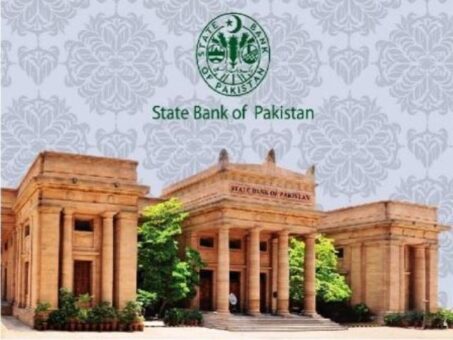KARACHI: The State Bank of Pakistan (SBP) on Tuesday relaxed the deadline for realization of export proceeds by making changes in its earlier notification.
The SBP issued EPD Circular No. 02 of 2022 and invited attention of authorized dealers in foreign exchange to FE Circular No. 1 dated January 5, 2022 in terms of which the period of realization of export proceeds was reduced from 180 days to 120 days.
READ MORE: SBP shortens period to 120 days for bringing export earnings
The central bank said that in view of the representation received from various Authorized Dealers, Chambers of Commerce & Industries and Exporters’ Associations, and to help exporters to fulfill their commitments, it is clarified that amendments introduced through the subject FE circular shall not be applicable on such exports where irrevocable letters of credit with usance period up to 180 days were issued or established up to the date of issuance of above instructions.
However, in all such cases authorized dealers shall not allow any change beyond 180 days in shipment date/expiry of LC/ enhancement in LC or shipment against expired LCs or any other terms and conditions relating to tenure of the LC after the issuance of the above circular.
READ MORE: SBP introduces licensing, regulations for digital banking
Moreover, where the terms of sale/ irrevocable letter of credit provide for payment on 120 days’ usance from the date of shipment, it shall be permissible for the exporter to repatriate the export proceeds within 135 days from shipment date.
The revised sub-para (i) of para 6 would read as:
READ MORE: SBP introduces Shariah compliant OMO injections
”Full export value of goods exported from Pakistan and declared to the Customs authorities should be received in an approved manner, as embodied in State Bank of Pakistan’s (SBP) Notification No. F.E. 1/2022-SB dated the January 5, 2022 on the due date for payment or within one hundred and twenty (120) days from the date of shipment, whichever is earlier, or within such period as may be prescribed by SBP through specific or general instruction, through an Authorized Dealer either in convertible foreign currency in which the Authorized Dealer maintains accounts or in Pakistan rupee from a repatriable rupee account of a nonresident. In case of shipment on DP/CAD/ sight basis the payment should be received within 45 days from date of shipment.
“However, where the terms of sale/irrevocable letter of credit provide for payment on 120 days’ usance from the date of shipment, it shall be permissible for the exporter to repatriate the export proceeds within 135 days from shipment date. Prior approval of the Exchange Policy Department, SBP should be obtained before arranging for payment in any manner other than that mentioned above.”
READ MORE: SBP directs banks to accept bearer prize bonds

